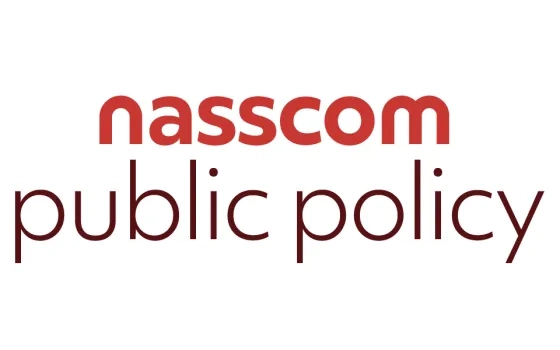The Economic Survey 2022-23 was tabled in Parliament by the Finance Minister Smt. Nirmala Sitharaman today. The Survey presents a review of the developments in the economy over the last year while presenting an outlook for the next financial year.
We at NASSCOM focus on two overarching objectives when pursuing our engagements with governments in India: (1) enabling growth, innovation & trust in digital markets (2) securing ease of doing business reforms, tax certainty, and a high-growth environment for start-ups in India. It is heartening to see several ideas in the Economic Survey that align with these two objectives. We discuss below several highlights and points that illustrate this alignment.
Some of the key highlights from the survey are listed below:
- India became the world’s fifth largest economy, measured in current dollars. By March, the nominal GDP of India will be around US$ 3.5 trillion.
- The Indian economy, appears to have moved on after its encounter with the pandemic, staging a full recovery in FY22 ahead of many nations and positioning itself to ascend to the pre-pandemic growth path in FY23.
- India's economy to grow 6.5% in 2023-24, compared to 7% this fiscal and 8.7% in 2021-22.
- Real GDP growth to be in the range of 6-6.8% next fiscal depending on global economic, political developments.
- RBI projection of 6.8 pc inflation this fiscal outside the upper target limit, not high enough to deter private consumption, also not too low to weaken inducement to invest.
- India’s gross FDI has increased from an average of 2.2 per cent of GDP during FY05-FY14 to 2.6 per cent in FY15-FY22. The highest-ever annual gross FDI inflow of USD 84.8 billion was recorded in FY22. These trends are an endorsement of India’s status as a preferred investment destination amongst global investors.
- The PLI scheme for large-scale electronics manufacturing has attracted an investment of ₹4,784 crore and contributed to a total production of ₹2.04 lakh crore, including exports of ₹80,769 crore (as of September 2022).
IT-BPM Industry:
- IT-BPM industry has been exceptionally resilient during the pandemic, driven by increased technology spending, accelerated technology adoption, and digital transformation.
- Growth in revenues: IT-BPM revenues registered YoY growth of 15.5 per cent during FY22 compared to 2.1 per cent growth in FY21, with all sub-sectors showing double-digit revenue growth. Within the ITBPM sector, IT services constitute the majority share (greater than 51 per cent).
- Growth in exports: Exports (including hardware) witnessed a growth of 17.2 per cent in FY22 compared to 1.9 per cent growth in FY21, owing to the increased reliance of businesses on technology, the roll-out of cost-reducing deals and the use of core operations. Growth in exports was seen across all the major markets, with the USA, Europe (excl. UK), and the UK continues to be the major markets.
- Growth in employment: In Q1 FY 22 to Q4 FY 22, the IT/BPM sector witnessed the highest growth of employment i.e., 17.6 lakh number of workers, followed by health (7.8 lakh), and education (1.7 lakh). It has the highest estimated number of workers in FY 22 (318 lakhs) compared to other sectors. The industry has the largest share of regular employee for the quarter Jan-March 2022.
- Digital talent nation: The industry recorded nearly 10 per cent estimated growth in direct employee pool in FY22 with a highest-ever net addition to its employee base. India has emerged as a digital talent nation with a high share of the working population and growing undergraduate enrolments. New talent hiring from tier-2 cities, with a focus on reskilling non-tech talent, has led India to evolve as a significant subcontractor base, with more women getting back into the workforce. Indian tech industry led the adoption of hybrid work models. The industry has the third highest estimated establishments imparting formal skill training and on the job training after health and financial services.
- Global powerhouse for ER&D: The proportion of digital revenue as a percentage of total revenue has increased from around 26-28 per cent in FY20 to 30-32 per cent in FY22. In recent years, India has emerged as a global powerhouse for Engineering R&D (ER&D) and innovation and is steadfastly committed to ushering future growth and innovation for global enterprises.
- Increase in patent filing: Patent filing has increased drastically, with over 138,000 patents filed between 2015- 21, with over 85,000 filed in emerging technologies.
Innovation and Start-ups:
- Growth in patents filed: Efforts towards fostering innovation are focused on strengthening the intellectual property regime in India. A 46% growth in the domestic filing of patents over 2016-2021 has been seen, indicating India’s transition towards a knowledge-based economy.
- Employment generation by start-ups: More than 9 lakhs direct jobs have been created by DPIIT recognised startups (self-reported), with a 64% increase in 2022 over the average number of new jobs created in the last three years. About 48% startups are from Tier II & III cities.
- Flipping and reverse flipping of start-ups: ‘Flipping’ has been observed in many start-ups. It refers to the process of transferring the entire ownership of an Indian company to an overseas entity, accompanied by a transfer of all intellectual property and all data owned by the Indian company. It effectively transforms an Indian company into a 100% subsidiary of a foreign entity, with the founders and investors retaining the same ownership via the foreign entity, having swapped all shares.
- Relatively easy access to capital through the Private Equity/Venture Capital ecosystem in India, changes in rules regarding roundtripping, and the growing maturity of India’s capital markets have not only slowed down ‘Flipping’, but companies are also exploring ‘Reverse Flipping’. The Economic Survey 2023 captures some measures to accelerate ‘Reverse Flipping’:
- Simplifying the process for obtaining Inter-Ministerial Board (IMB) certification for start-ups.
- Further simplification of taxation of Employee Stock Options (ESOPs).
- Simplifying multiple layers of tax and uncertainty due to tax litigation.
- Simplifying procedures for capital flows: Many countries, such as US and Singapore, have easier corporate laws, with lesser restrictions on the inflow and outflow of capital and treatment of hybrid securities.
- Facilitating improved collaboration and partnerships with established private entities to develop best practices and state-of-the-art start-up mentorship platforms.
- Exploring the incubation and funding landscape for start-ups in emerging fields like social innovation and impact investment.
- The government’s efforts towards fostering innovation include incubation, handholding, funding, industry-academia partnership, and mentorship. The government has also strengthened its IPR regime by modernising the IP office, reducing legal compliances, and facilitating IP filing for start-ups, women entrepreneurs, small industries and others. This has resulted in a 46 per cent growth in the domestic filing of patents over 2016-2021, signalling India’s transition towards a knowledge-based economy.
- The Global Innovation Index (GII) ranks the countries based on innovation performance, comprising around 80 indicators, including measures on the political environment, education, infrastructure, and knowledge creation of each economy. As per the GII 2022 report, India entered the top 40 innovating countries for the first time in 2022 since the inception of the GII in 2007 by improving its rank from 81 in 2015 to 40 in 2022. Further, India became the most innovative nation in the lower middle-income group overtaking Vietnam (48th) and leading the Central and Southern Asia region.
Fintech/Digital Payments:
India has the highest FinTech adoption rate of 87% among public, as compared to the global average of 64%. India has gained the 3rd place in digital payments, only after US and China. In 2022, over 600 crore digital payment transactions were completed per month.
Drones:
Drone start-ups and Drone-as-a-Service (DrAAS) are being promoted under the ‘Drone Shakti’ mission. Almost 90% of the airspace has now been opened as a green zone for flying drones up to 400 feet. A Production-Linked Incentive (PLI) scheme for drones and drone import policy has been notified.
e-Commerce:
- Overall growth: India’s e-commerce market is projected to grow at 18% annually through 2025. Fashion, grocery, and general merchandise are predicted to capture nearly 2/3rd of the Indian e-commerce market by 2027.
- Geographical expansion: New e-commerce companies are expanding and gaining popularity in Tier 3 and 4 cities. The e-commerce industry is focusing on penetrating rural areas by strengthening the network of rural distributors/retailers and using local distribution centres as Pick-Up-Drop-Off points, enabling logistics companies to serve rural consumers. Overall e-commerce order volume witnessed a growth of 69.4% YoY in FY22, driven mainly by consumers from tier 2 and tier 3 cities in the last two years.
- Government e-Marketplace (GeM): GeM attained an annual procurement of ₹1 lakh crore within FY22, representing a 160% growth compared to FY21. 57% of the total business on GeM has come through the MSME units, and over 6% has come from female entrepreneurs.
Taxation:
The Corporate tax collections for April to November 2022 have increased by 21.1% on a YoY basis compared to a longer-term average YoY growth of 10.3% during the corresponding period from FY13 to FY19. One prominent reason behind the higher revenue buoyancy is the introduction of technology-backed tax governance reforms for simplifying tax processes, enhancing compliance, and improving fraud detection systems. The GST has stabilised as a vital revenue source for central and state governments, with the gross GST collections increasing at 24.8% on YoY basis during April - December 2022.
Digital Infrastructure:
- Low-cost accessibility (Aadhaar), the success of citizen-centric services like Unified Payments Interface (UPI), large-scale adoption and reach (DigiLocker, MyGov), and the vaccine journey through Co-Win are important and successful milestones in India’s public digital infrastructure journey.
- On average, between FY19-22 (calendar year), growth in UPI-based transactions in value and volume terms have been 121 per cent and 115 per cent, respectively. Recently, in Dec 2022, UPI touched its highest-ever mark with 782 crore transactions worth ₹12.8 lakh crore. Tech companies are increasingly leveraging the power of UPI to expand the digital ecosystem, which has led to a significant acceleration in the pace of financial inclusion.
- The overall tele-density in India stood at 84.8 per cent, with wide differences across states. Eight license service areas, namely, Delhi, Mumbai, Kolkata, Himachal Pradesh, Kerala, Punjab, Tamil Nadu, and Karnataka had a tele-density of above 100 per cent.
- As a major reform measure, the Indian Telegraph Right of Way (Amendment) Rules, 2022, will facilitate faster and easier deployment of telegraph infrastructure to enable speedy 5G rollout.
- Until 16 January 2023, Unified Mobile Application for New-Age Governance (UMANG), catered to about 21,869 services (1,672 Central and State Govt. services and 20197 Bill Payment services) under 310+ departments of Central Government and departments of 34 States/UTs. Over 4.9 crore users are registered and benefiting from services on UMANG. Four hundred and eighty-nine DBT (Direct Benefit Transfer) schemes were made live on UMANG until September 2022.
- ONDC’s beta test in the city of Bengaluru is a major first step in operationalising a network approach to e-commerce as an alternative to a platform-centric approach.
- The national AI portal has been developed with a view to strengthening the AI ecosystem in the country by pooling together and highlighting the latest developments happening in Central and State Governments, industry, academia, NGOs, and civil societies. As on 16 January 2023, it has published 1724 articles, 829 news items, 276 videos, 127 research reports, and 120 government initiatives, all related to AI.
- The Digital India Bhashini portal is a public digital platform on which 260 open-source API-based AI models are available for speech-to-text conversion, machine translation, and text-to-speech conversion in 11 Indian languages and English for various purposes.
- With 23 Banks onboarded to the Account Aggregator (AA) framework, more than 1.1 billion bank accounts are eligible to share data on AA. 3.3 million users have linked their accounts on the AA framework out of which 3.28 million users successfully shared data via AA.
Labour Reforms
The new Labour Codes have been aligned with the present economic scenario and technological advancements along with reduction in multiplicity of definitions and authorities. As of December 31, 2022 the following number of states have pre-published the draft rules under various labour codes:
- 31 States under the Code on Wages
- 28 States under Industrial Relations Code
- 28 States under Code on Social Security
- 26 States under Occupational Safety Health and Working Conditions Code.





![[Analysis] Parliament’s Standing Committee Report Calls for Strengthening CCI and Proposes Refinements in the Digital Competition Bill](https://community.nasscom.in/sites/default/files/styles/560_x_350/public/media/images/For%20Blog%20-nasscom%20public%20policy%20960%20x%20600%20png_14.png.webp?itok=TVoaAkX5)





